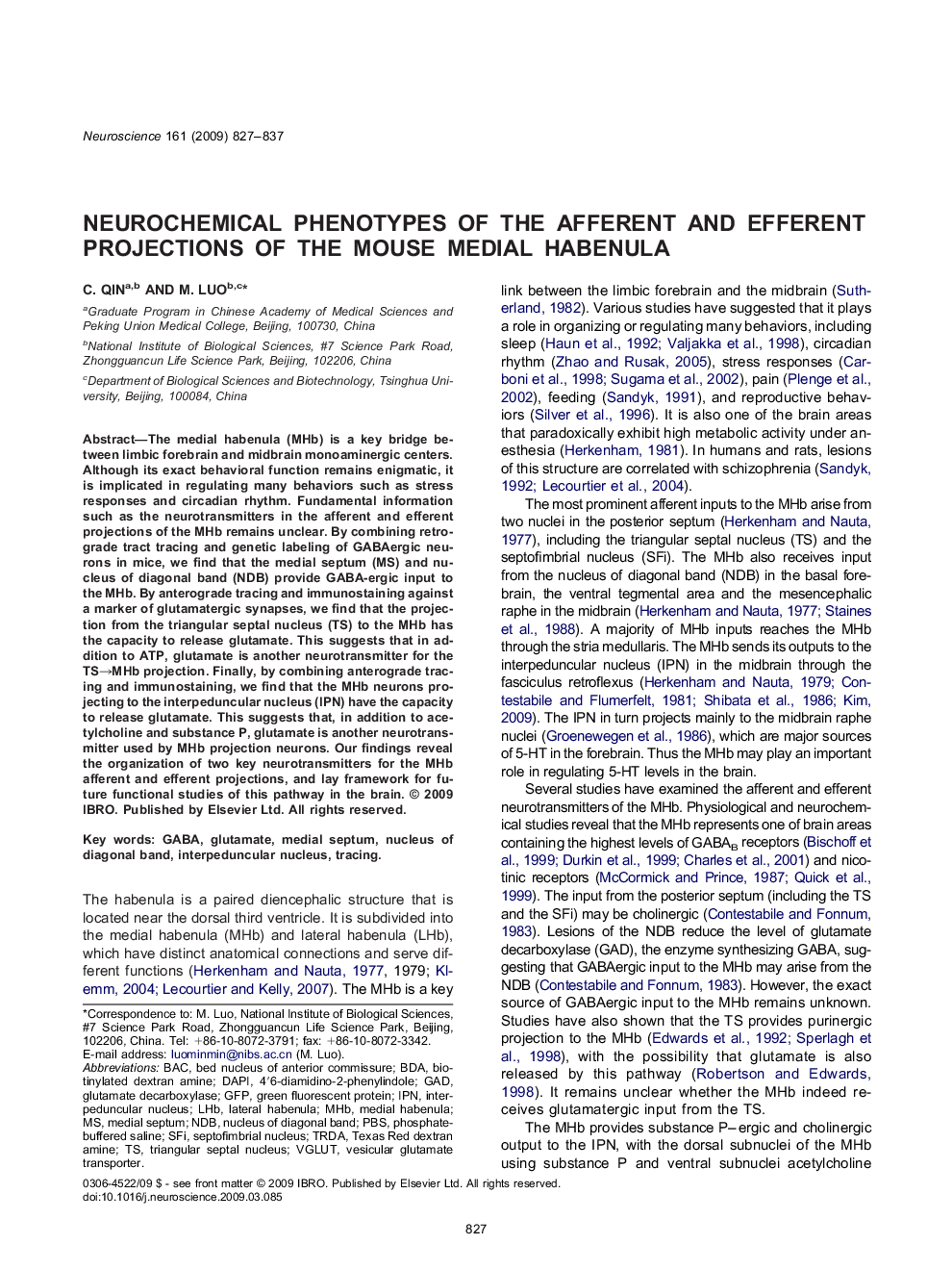| Article ID | Journal | Published Year | Pages | File Type |
|---|---|---|---|---|
| 4340015 | Neuroscience | 2009 | 11 Pages |
The medial habenula (MHb) is a key bridge between limbic forebrain and midbrain monoaminergic centers. Although its exact behavioral function remains enigmatic, it is implicated in regulating many behaviors such as stress responses and circadian rhythm. Fundamental information such as the neurotransmitters in the afferent and efferent projections of the MHb remains unclear. By combining retrograde tract tracing and genetic labeling of GABAergic neurons in mice, we find that the medial septum (MS) and nucleus of diagonal band (NDB) provide GABA-ergic input to the MHb. By anterograde tracing and immunostaining against a marker of glutamatergic synapses, we find that the projection from the triangular septal nucleus (TS) to the MHb has the capacity to release glutamate. This suggests that in addition to ATP, glutamate is another neurotransmitter for the TS→MHb projection. Finally, by combining anterograde tracing and immunostaining, we find that the MHb neurons projecting to the interpeduncular nucleus (IPN) have the capacity to release glutamate. This suggests that, in addition to acetylcholine and substance P, glutamate is another neurotransmitter used by MHb projection neurons. Our findings reveal the organization of two key neurotransmitters for the MHb afferent and efferent projections, and lay framework for future functional studies of this pathway in the brain.
